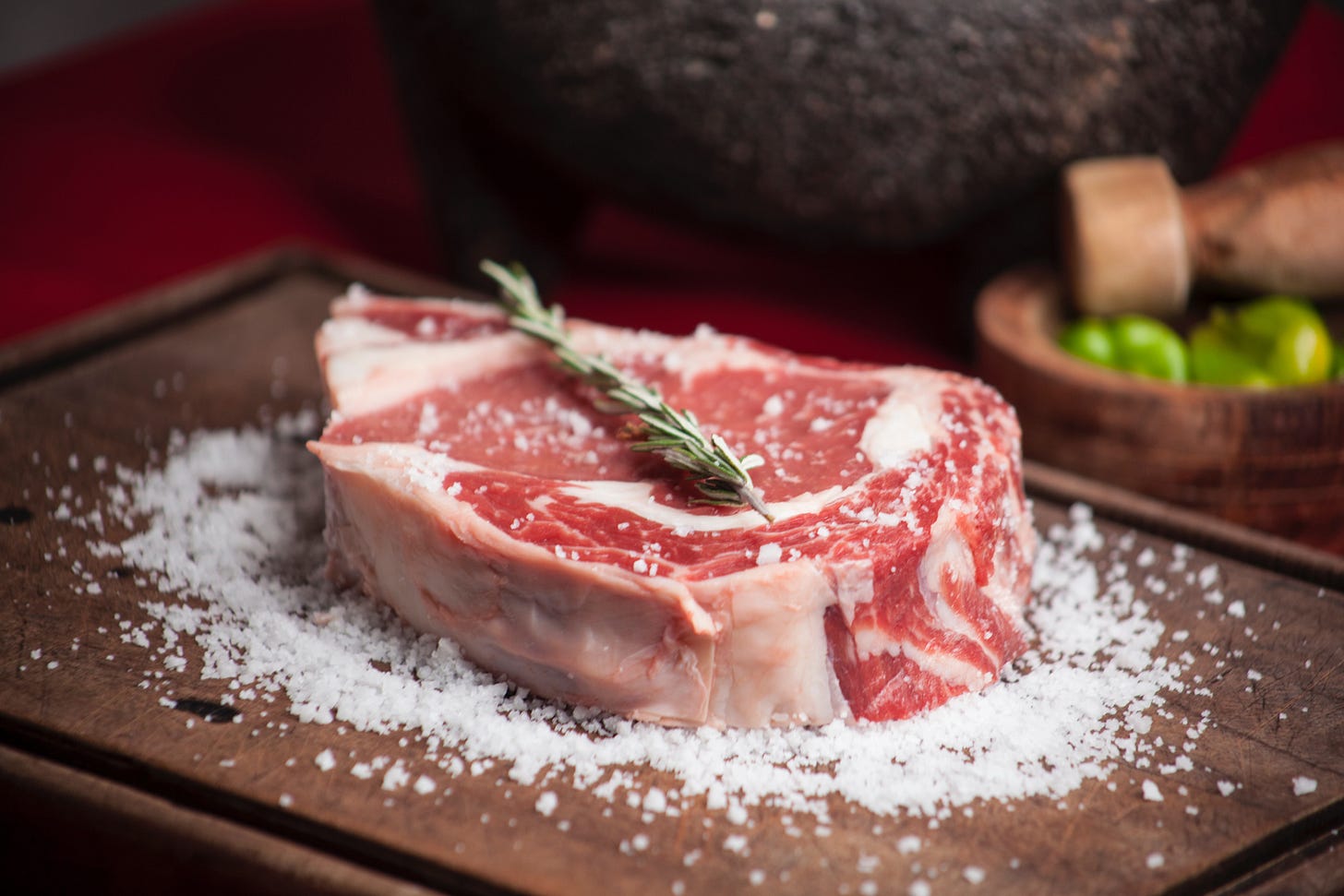What 4 happenings downstream tell us about the future of upstream.
Prime Future 020: The weekly newsletter highlighting tech trends throughout the animal protein value chain.
To frame up 4 trends that will drive change upstream (production, processing) in animal agriculture, we start with 4 recent downstream (retail, foodservice) announcements:
(1) Walmart’s response to Amazon Prime:
"Walmart Inc. is trying again to build a membership program that can rival Amazon Prime, the Amazon.com Inc. service with more than 150 million members. On Sept. 15, the retail giant will launch Walmart+, a $98-a-year membership that includes free grocery delivery, a discount on gas from Walmart parking lots and the ability to check out via a mobile phone in stores.”
(2) Amazon launch of an online only store:
"This store will be fully staffed by Whole Foods Market Team Members who are 100 percent dedicated to facilitating grocery delivery—enabling them to quickly receive, shop, and prepare orders for delivery to more customers than ever before. Grocery delivery continues to be one of the fastest-growing businesses at Amazon. In fact, online grocery sales tripled year over year in the second quarter this year, indicating that more customers than ever before are turning to Amazon for grocery delivery options."
(3) Full value chain collaboration to advance regenerative agriculture:
The Nature Conservancy, McDonald’s, Cargill and Target are coming together to launch a new five-year, $8.5 million project aimed at working with Nebraska farmers to advance proven soil health practices to help mitigate greenhouse gas emissions and help farmers adapt to climate change. Overall, this effort has the potential to sequester 150,000 metric tons of carbon dioxide over the course of the project – equivalent to removing over 32,000 cars from the road in one year. Implemented practices will help store carbon in the soil versus the atmosphere, revitalizing the health of agricultural lands, which benefits farmers and the environment.
(4) Merck Animal Health’s acquisition of IdentiGEN:
"IdentiGEN’s technology combines each species’ unique DNA (deoxyribonucleic acid) and data analytics to provide an evidence-based animal traceability solution, called DNA TraceBack®, to accurately and precisely trace beef, seafood, pork and poultry that is verifiable from farm-to-table. Food producers, processors and retailers are looking for accurate and complete animal traceability solutions that provide full accountability, as well as greater transparency, quality and sustainability of food sources for consumers.” Tyson is an IdentiGEN customer, using the traceability capability for its retail brand Open Prairie Natural Angus Beef.
The moves above illustrate 4 trends that will inevitably impact upstream beef, pork, poultry, and dairy:
Grocery is at the center of what seems like the Mega Retail War to End All Retail Wars. Whole Foods sells premium meat and poultry with multiple specialty claims while Walmart sells case ready meat & poultry, but is launching its own beef supply chain. Grocery is at the center of a slugfest between Amazon, a $1.7 Trillion company, and Walmart, a $416 Billion company. Meat is at the epicenter of grocery. This matters.
Buying behavior massively shifting to online. How does the meat industry take advantage of consumers moving much of their retail purchasing online, either for delivery or curbside pickup? You know I think this is the tip of the iceberg of what D2C will mean to packers. But what does it mean for how packers serve their retail customers?
Increasing alignment among supply chains. The proverbial distance between animal health companies and retailers, or between cow-calf producers and foodservice companies, is shrinking.
Increased fluidity. An animal health company as a data provider to retail? Packers as retail, e.g. Perdue Farms D2C? Retailers as packers, feeders, cow-calf producers, e.g. Walmart’s Prime Pursuits initiative with 44 Farms? The traditional lines are blurring. Everyone is in everyone else’s lane. We’ll unpack this more another time, but this is one of the highest impact trends that’s just beginning to play out.
How do you interpret these events & their potential upstream impacts?
Grab the Prime Future ebook (link)
Like what you’re reading? Get 46 additional editions of Prime Future to date in one PDF. From livestock genetics to new business models, get insight into trends and strategies across animal ag.
A quick mention….
You won’t see much about alternative meats in Prime Future because my focus is on innovation withIN animal agriculture that keeps animal protein relevant forever and ever, amen. (More on my Why.)
But you’ve likely seen this Business Insider headline & image of a 3D printed “steak”:
As a lifelong fan of marbling, the visual here offends my sensibilities. That said, 3D printing technology is another category of alternative meats that the industry needs to keep on the radar in addition to plant based and cell based.
My position on alternative meats is that meat & poultry processors are smart to hedge their bets by investing in the most promising startups in that space, but it's time for the industry to dig in and innovate the core products to meet consumer expectations.
Nicole Johnson-Hoffman recently joined the AgTech…So What? podcast and said “I think beef production is good for the planet, its good for communities, it is a net positive. Trying to find ways to make it even better is my goal.”
Same.
Janette Barnard works to enable technologies throughout the animal protein value chain. Janette is now Managing Principal with Rock Road Consulting, helping companies to launch, source, and fund innovation in animal agriculture. She leveraged her commercial experience with Elanco Animal Health, Cargill, and McDonald’s Global Supply Chain team to launch and grow two animal protein focused startups.





